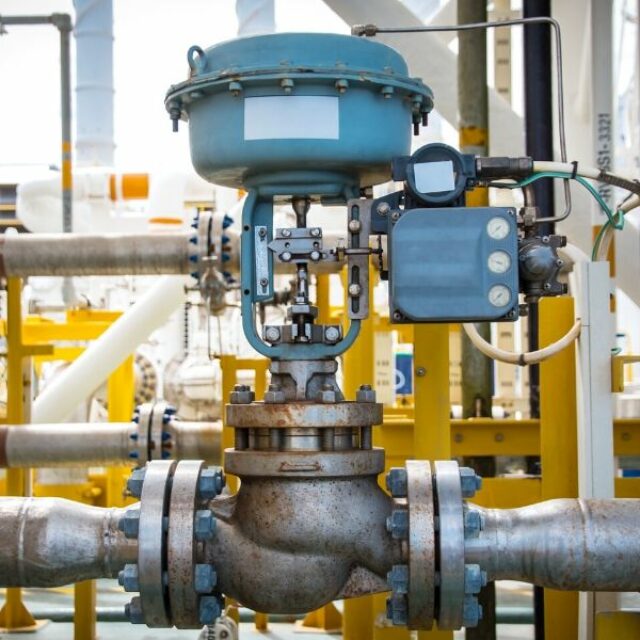Enhancing System Control with High-Performance Control Valves
Enhancing System Control with High-Performance Control Valves
Blog Article

Maximize Energy Cost Savings and Comfort With Advanced Structure Automation Controls
In the realm of contemporary style and center management, the integration of innovative structure automation controls stands as an essential improvement. By utilizing the power of automation, buildings can adapt, react, and progress in means that were as soon as unimaginable.
Energy Effectiveness Perks
Power performance benefits can dramatically lower power usage and functional costs in buildings. Energy-efficient systems, such as innovative structure automation controls, can optimize the use of sources like cooling, illumination, and home heating, leading to reduced energy costs over time.
Furthermore, improved power performance can extend the life-span of building devices and systems. By running extra successfully, HVAC systems, lighting fixture, and other structure parts experience much less damage, leading to reduced maintenance and substitute prices. In addition, energy-efficient buildings typically regulate greater home values and rental rates, providing long-term financial advantages to owners.
Additionally, energy efficiency can boost owner convenience and efficiency. Appropriately controlled interior atmospheres with optimum lights and thermal conditions create an even more pleasurable and favorable work space, bring about improved employee complete satisfaction and efficiency. Overall, the energy performance advantages related to advanced building automation controls are complex, encompassing expense financial savings, environmental stewardship, and occupant wellness.
Enhanced Comfort Control
Enhancing comfort control in structure environments requires a sophisticated assimilation of advanced automation systems for ideal resident health. By utilizing innovative building automation controls, centers can customize the interior environment to satisfy the certain demands and preferences of occupants. control valves.
Improved convenience control surpasses basic temperature level modifications. It consists of attributes such as personalized settings, occupancy sensing units, and all-natural light usage to create a vibrant and receptive environment. By including these advanced controls, structures can not only enhance convenience however likewise enhance energy efficiency by maximizing system operations based upon actual occupancy and usage patterns. Inevitably, prioritizing occupant convenience with sophisticated automation systems leads to a more pleasurable and much healthier interior setting.
Operational Efficiency Improvements

In addition, the execution of real-time tracking and analytics tools allows structure operators to identify power inadequacies and functional abnormalities without delay. By continually keeping track of energy use patterns and system performance metrics, adjustments can be made in real-time to maximize power intake and make certain peak operational performance. control valves. In addition, including need feedback methods into building automation controls can better enhance functional efficiency by dynamically adjusting energy use based upon grid problems and pricing signals
Indoor Climate Optimization
Reliable interior environment optimization is an essential facet click this of building automation controls, guaranteeing passengers' convenience and health while making best use of power financial savings. By utilizing sophisticated sensing units and controls, building automation systems can continuously check and adjust temperature level, humidity levels, air high quality, and ventilation to develop an optimal interior environment. Keeping consistent and comfy conditions not only boosts occupant complete satisfaction however additionally increases performance and general wellness.
Indoor environment optimization additionally plays a critical role in power effectiveness. By fine-tuning home heating, cooling, and ventilation systems based on real-time data and tenancy patterns, constructing automation controls can dramatically lower energy consumption - control valves. Applying click for source approaches such as demand-controlled air flow and thermal zoning can assist minimize energy waste while guaranteeing that each area of the building gets the required conditioning.
Sustainable Setting Development
Building automation manages not just enhance indoor climate problems for power performance and resident convenience but additionally lay the foundation for producing a sustainable environment with calculated administration of systems and resources. By integrating advanced structure automation technologies, such as sensors, actuators, and intelligent software, facilities can readjust and monitor power use in real-time to lessen waste and lower their carbon impact. These systems allow anticipating upkeep, recognizing possible issues prior to they escalate and maximizing devices performance to boost longevity and efficiency.
In addition, lasting environment production extends beyond energy administration to incorporate water preservation, waste reduction, and indoor air quality renovation. Structure automation controls can manage water use, identify leakages, and guarantee correct waste disposal techniques, adding to total sustainability efforts. Additionally, by regulating and checking air flow and filtering systems, these innovations boost resident health and wellness and performance while lowering power usage connected with a/c procedures.
Final Thought
In final thought, advanced building automation controls offer substantial advantages in terms of power cost savings, comfort control, functional efficiency, indoor climate optimization, and producing a sustainable environment. By carrying visit the website out these controls, structures can achieve optimal efficiency while lowering power usage and boosting passenger convenience. It is noticeable that the usage of innovative automation innovation is critical in boosting building performance and creating an extra lasting future.
Energy performance benefits can considerably reduce power consumption and operational expenses in buildings. On the whole, the energy effectiveness advantages connected with innovative structure automation controls are diverse, including expense financial savings, environmental stewardship, and occupant wellness.
In addition, integrating need action approaches right into building automation controls can further boost operational efficiency by dynamically changing power usage based on grid problems and pricing signals.
Structure automation regulates not just maximize indoor environment conditions for energy efficiency and passenger comfort however additionally lay the foundation for creating a sustainable environment through calculated management of resources and systems.In final thought, advanced building automation controls offer substantial advantages in terms of power savings, convenience control, operational effectiveness, interior climate optimization, and creating a lasting environment.
Report this page